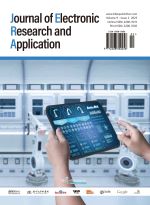Research and Analysis of the Droplet-Based Electricity Generator Based on a Rotating Structure
Abstract
With the development of science and technology, the social demand for energy is also increasing. However, the traditional method of energy supply primarily relies on non-renewable resources for energy conversion. While this conventional approach can expedite the energy conversion process, it also results in irreversible ecological hazards. To solve the above problems, the use of renewable clean energy is proposed. In this paper, a droplet generator is proposed to integrate the rotating structure with the body effect power generation for the tiny energy of raindrops. This droplet generator can increase the speed of droplets leaving the dielectric layer and reduce the effect of continuously falling droplets on the droplet-based electricity generator (DEG). It is demonstrated that the instantaneous power of the generator can reach 0.9 mW, which can be a good solution to the power supply needs of some small power supply equipment, and thereafter is beneficial to the self-powering of the equipment in rainy days.
References
Liu G, Xu J, Chen T, et al., 2022, Progress in Thermoplasmonics for Solar Energy Applications. Physics Reports, 981: 1–50.
Verduci R, Romano V, Brunetti G, et al., 2022, Solar Energy in Space Applications: Review and Technology Perspectives. Adv. Energy Mater., 12: 2200125. https://doi.org/10.1002/aenm.202200125.
Wang S, Wang L, Huang W, 2020, Bismuth-Based Photocatalysts for Solar Energy Conversion. Journal of Materials Chemistry A, 8(46): 24307–24352.
Denny E, O’Malley M, 2006, Wind Generation, Power System Operation, and Emissions Reduction. IEEE Transactions on Power Systems, 21(1): 341–347.
Erlich I, Shewarega F, Feltes C, et al., 2013, Offshore Wind Power Generation Technologies. Proceedings of the IEEE, 101(4): 891–905.
Javed MS, Ma T, Jurasz J, et al., 2020, Solar and Wind Power Generation Systems with Pumped Hydro Storage: Review and Future Perspectives. Renewable Energy, 148: 176–192.
Angeloudis A, Kramer S, Hawkins N, et al., 2020, On the Potential of Linked-Basin Tidal Power Plants: An Operational and Coastal Modelling Assessment. Renewable Energy, 155: 876–888. https://doi.org/10.1016/j.renene.2020.03.167.
Dai L, Wang Y, Li W, et al., 2021, A Green All-Polysaccharide Hydrogel Platform for Sensing and Electricity Harvesting/Storage. Journal of Power Sources, 493: 229711.
Shetty C, Priyam A, 2022, A Review on Tidal Energy Technologies. Materials Today: Proceedings, 56: 2774–2779.
Wang J, et al., 2017, Achieving Ultrahigh Triboelectric Charge Density for Efficient Energy Harvesting. Nature Communications, 8(1): 1–8.
Jiang Q, Wu C, Wang Z, et al., 2018, MXene Electrochemical Microsupercapacitor Integrated with Triboelectric Nanogenerator as a Wearable Self-Charging Power Unit. Nano Energy, 45: 266–272.
Chen B, Yang Y, Wang ZL, 2018, Scavenging Wind Energy by Triboelectric Nanogenerators. Advanced Energy Materials, 8(10): 1702649.
Zhang S L, Xu M, Zhang C, et al., 2018, Rationally Designed Sea Snake Structure-Based Triboelectric Nanogenerators for Effectively and Efficiently Harvesting Ocean Wave Energy with Minimized Water Screening Effect. Nano Energy, 48: 421–429.
Wang P, Pan L, Wang J, et al., 2018, An Ultra-Low-Friction Triboelectric–Electromagnetic Hybrid Nanogenerator for Rotation Energy Harvesting and Self-Powered Wind Speed Sensor. ACS Nano, 12(9): 9433–9440.
Xiong J, Cui P, Chen X, et al., 2018, Skin-Touch-Actuated Textile-Based Triboelectric Nanogenerator with Black Phosphorus for Durable Biomechanical Energy Harvesting. Nature Communications, 9(1): 1–9.
Liu W, Wang Z, Wang G, et al., 2019, Integrated Charge Excitation Triboelectric Nanogenerator. Nature Communications, 10(1): 1–9.
Ouyang H, Liu Z, Li N, et al., 2019, Symbiotic Cardiac Pacemaker. Nature Communications, 10(1): 1–10.
Nie J, Wang Z, Ren Z, et al., 2019, Power Generation from the Interaction of a Liquid Droplet and a Liquid Membrane. Nature Communications, 10(1): 1–10.
Xu W, Zheng H, Liu Y, et al., 2020, A Droplet-Based Electricity Generator with High Instantaneous Power Density. Nature, 578(7795): 392–396.

